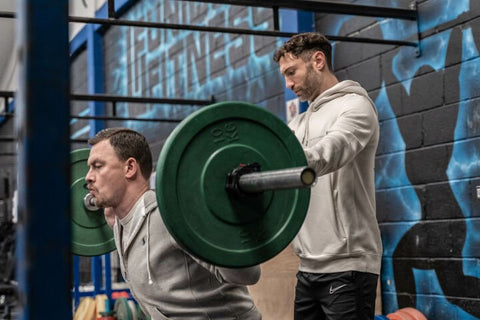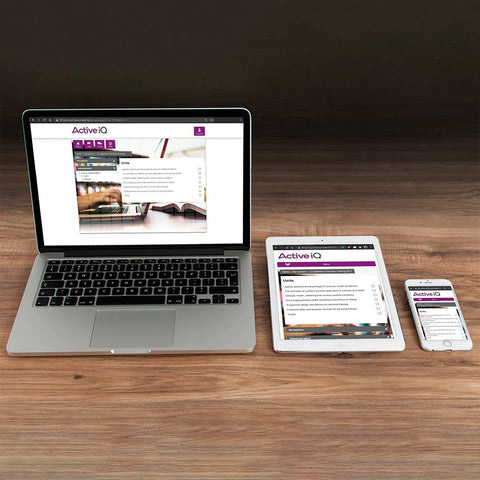How do I Become a Personal Trainer?

Becoming a personal trainer is easier than you think! With a high demand for good personal trainers in the fitness industry, it's never been a better time to get qualified. Keep on reading to find out how to become a personal trainer.
So what is a personal trainer?
“A personal trainer is an individual who has gained a certification showing that they have achieved a level of competency for creating and delivering safe and effective exercise programs, to inspire health and fitness to individuals and groups.”
As a personal trainer, you will be working with a wide range of clients to help them achieve their fitness goals. The key here is inspiring health and fitness in others. It's one thing to have a qualification, but it's another thing to have the passion to change people's lives. That’s the difference between a good and great trainer!
Not only do you support a client's physical health, but you can also help with nutrition and supporting a client's mental health. Your ultimate goal is to help a client achieve their goals. These goals can come in many different forms of fitness. The more creative you are with achieving those goals, the more success you will have.
Now you’re inspired to be a personal trainer, how do you get started? Let's dive into some commonly asked questions about becoming a personal trainer.
What Qualifications do I Need to Be a Personal Trainer?

To become a personal trainer you need to complete 2 qualifications. As well as qualifications, to succeed, a passion for fitness, good fitness, and great communication skills are huge benefits for a personal trainer. Let’s dive into the qualifications you need:
Level 2 Gym Instructor
A Level 2 Gym Instructor qualification is the basic credential that you need to work in a gym. This qualification teaches you the basics of the body, how to induct a client into the gym, how to use all equipment correctly, delivering great customer service, and how to plan an effective exercise session.
This is the minimum qualification you need to work in a gym and is also the first step towards becoming a personal trainer. This course is studied online via our easy online learning platform, all from the comfort of your home.
Level 3 Personal Trainer
Once you have completed your Level 2 Gym Instructor, the next step is to complete your Level 3 Personal Trainer qualification. This is the final qualification you need to become a qualified personal trainer.
In this course, you develop your knowledge as a fitness professional. You learn in-depth about the anatomy and physiology of the body, how to effectively plan a personal training session, how to set up a PT business and much more.
This qualification allows you to hone your skills and leave this course with the confidence and skills to start as a personal trainer.
If you’re starting from scratch and need to get both qualifications, we have created a handy package that offers both qualifications. This package is called Level 3 Diploma in Gym Instructing and Personal Training.
Now let’s look at what comes next now that you’re qualified as a personal trainer.
Where do I Train my Clients?

Now you’re qualified, you need to decide where you want to train your clients. There are a few options and it all depends on your style, where you feel comfortable and whether you want to work for yourself or as part of your local gym.
Either option is excellent depending on your goals as a personal trainer. You may already have a client base, if so, creating your own business could be a great way to maximise your current client base and attract new customers.
If you’re just starting out, working at your local gym will give you a great way to connect with potential clients while earning. This also gives you access to a space in a gym and the opportunity to teach a range of classes too.
Whether you start freelancing or work in a gym, the most important bit is doing what works best for you and your career goals!
What are the Next Steps?

Once you’re qualified, there are a few things to bare in mind to make sure you keep yourself and others safe.
Insurance:
Insurance is a great option to protect yourself and your clients. If you are employed in a gym, your employer may have Employers Liability Insurance. This is worth checking when you first begin at your place of work.
If you are self-employed, it is advised that you take out insurance to protect your clients and yourself. You can take out Public Liability Insurance, which protects you against claims made as a result of property damage or injuries sustained by members of the public, connected with your work.
You can take this insurance out no matter the size of your operation. You are advised to take out professional indemnity insurance, which covers the advice you give to your clients, including your legal fees as well as any compensation costs.
First Aid Qualification:
It is advised that you get a First Aid Certificate so that you can offer support to your clients in case of an emergency. This can be something your company puts you through or if you’re self-employed, you can complete it yourself.
Join Organisations:
Joining organisations such as CIMSPA, REPS or the National Register of Personal Trainers (NRPT) is a great addition to your service to connect with others, validate your Personal Training and offer your services.
Social Media:
There are many platforms to use that can help promote yourself as a business, using these tools are free and fantastic to gain new clients. Get creative and be yourself.
Courses for Personal Trainers

Now you’re qualified it's time to think about future qualifications. This doesn't have to be done right away, but it's great to keep educating yourself to help your knowledge grow and to benefit your clients. These courses for personal trainers will diversify your skills and allow you to teach a range of fitness classes!
Incorporating qualifications like sports massage therapy can help you offer the complete package to your clients. Or upskilling to a strength and conditioning coach, allows you to take the next step and start working with athletes.
Here is a list of courses for personal trainers looking to upskill:
Level 4 Certificate in Strength and Conditioning
Level 3 and 4 Diploma in Sports Massage Therapy
Level 3 Supporting Clients Wiht Long Term Conditions
Level 2 Certificate in Group Training
Level 2 Award in Instructing Studio Cycling
Level 2 Award in Instructing Kettlebells
Level 2 Award in Instructing Circuit Sessions
Level 2 Mental Health Awareness and First Aid
There you have it, all the knowledge you need to become a personal trainer. Here at FIT we hope to inspire the next generation of personal trainers, get in touch if we can help you achieve your goals.

Leave a comment